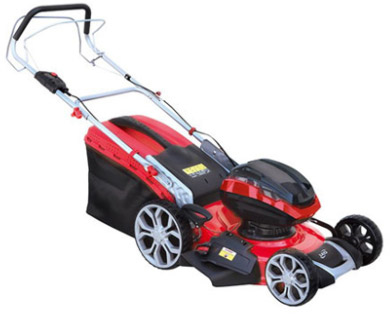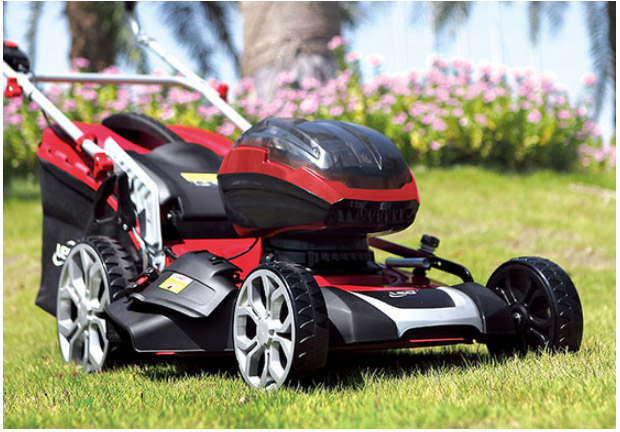The electronic lawn mower is a mechanical tool for trimming the lawn and vegetation, and its advent has brought great convenience. It is composed of a cutter, an engine, a road wheel, blades, two handrails, and a control part. The cutter is installed on the road wheel and driven by the engine. Some blades are installed on the output axis of the engine, which is driven by the engine and rotates at a high velocity. It not only saves operating time for lawn workers but also reduces plenty of human resources.

Manual lawn mowers only trim horizontally along the slope rather than up and down. By comparison, electric lawn mowers can be operated more conveniently. Lawn mowers are mainly applied to trimming decorations in gardens, greening grasslands, urban streets, scenic spots, plants in the countryside, and field weeding. Besides, electric lawnmowers are especially used for grasslands and prairies in the park, soccer fields, gardens of private mansions, and vegetation of agricultural, forestry, and animal husbandry fields, as well as harvests in autumn. On the other hand, lawnmowers are limited in cutting grass on rural areas, the edge of fields, and mountainous land due to uneven terrains, no access to power supplies, and inconvenience to carry.
Categories of electrical lawn mowers
The first and most common type is the reciprocating lawn mower, which is characterized by evenly-cut grasslands and a smaller cutting frequency per unit. Despite its numerous advantages, this lawn mower has many flaws. For instance, the electrical lawn mower adapts poorly to the growing states of different types of grass and is easily congested. Thus it is only applicable to flat grassland. A reciprocating lawn mower works slowly, with a top operating speed of 3m/s and an advancing speed of 6-8 km/h.
The second type is the tractor-mounted lawn mower, which is lighter than the first type. With a simple structure, high convenience, and flexibility, it is applied the most widely. This lawn mower averagely operates at the speed of 1.6~2.0 m/s and is suitable for large farms.
The third and fastest type is the rotating lawn mower, which operates at the speed of 60-90 m/s. It functions stably and is thus suitable for all types of grasslands. On the downside, the mower doesn't cut grass evenly and requires frequent recutting.
The fourth type is the rolling lawn mower equipped with a gearing device above the cutter. The rolling lawn mower generally consists of 1~4 vertical cylindrical or conical rollers. All rollers are installed in parallel. Besides, a cutter is installed below each roller and connected to 2~6 blades through a hinge joint. The rolling trajectories of blades installed on the approaching cutter overlap to avoid miss cutting. Besides, all rollers are driven through the adhesive tape or the bevel gear. In operation, two adjoining rollers rotate in opposite directions. The grass cut by the mower is pulled over by the roller, placed backward, and pressed into windrows. Although the lawn mower meets the requirements for low-height cutting, it doesn't have a concise structure.
Electric lawn mower troubleshooting
1.Inability to cut grass
Take the air filter off for cleaning. If the filter cannot be cleaned, it should be replaced. Next, check whether the blade is sharp. If the blade is blunt, it needs polishing. Lastly, check whether the grass growing in the lawn is long and thick. If it is, the cutting dimensions should be raised to reduce the load on the engine.

2. What failure effects will the engine have if engine oil is not replaced?
As the engine's working hours lengthen, wastes dissolved in engine oil accumulate. Correspondingly, the engine oil's color darkens into black, and its lubrication effect is reduced. If engine oil is not changed, its lubrication effect will decline. With time, the engine oil will be excessively consumed. Meanwhile, the engine will be abraded earlier and lose its power until the connecting rod breaks. Eventually, the engine is written off. Thus engine oil should be replaced at an interval of 50 hours. If the engine operates at a high temperature or in a dusty environment, engine oil should be changed within 25 hours. Or the time for changing can be flexibly determined according to the colors of engine oil in the oil chamber.

